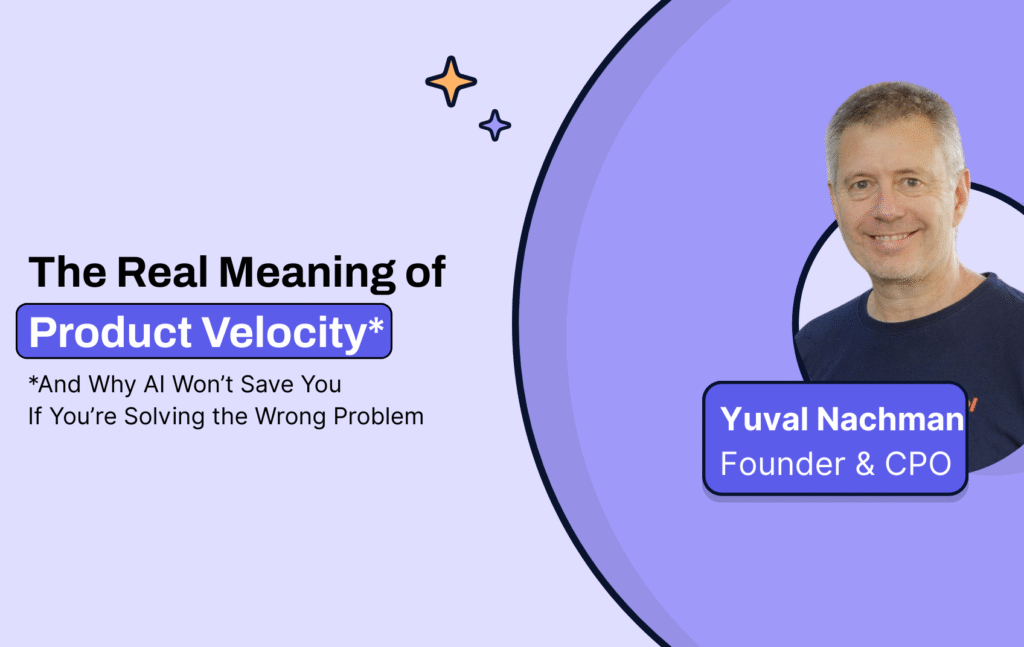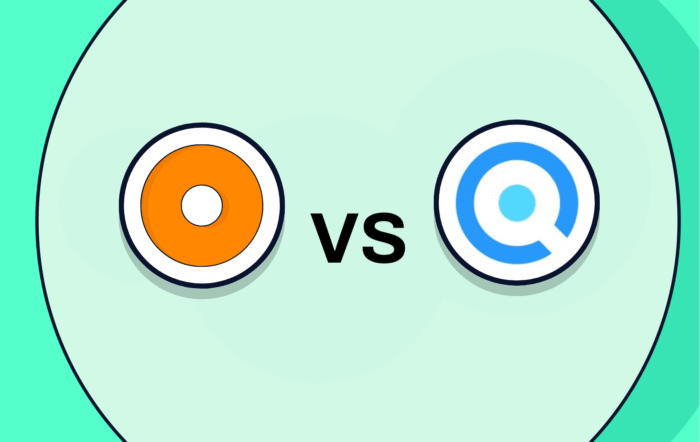By Yuval Nachman, CPO & Co-founder, Bagel AI
Everyone wants to go faster.
Product velocity has become one of those phrases that everyone uses but few define clearly. Teams are told to move faster, automate more, and rely on AI to accelerate everything from development to launch. But in the day-to-day work of product management, speed alone rarely creates business impact. What matters is how teams use that speed to make better decisions for their customers and the company.
Watch the Full Talk at the Google Cloud Partners Event
Velocity ≠ Speed
When we talk about velocity, most of the attention goes to engineering or design. Developers measure it in commits or sprint points. Designers measure it in iterations or prototypes. Both roles have tangible outcomes that make “going faster” visible.
For product teams, velocity looks different. Product work isn’t about the number of Product Briefs written or user stories created. It’s about how quickly teams can move from feedback and insight to validated business impact. That kind of velocity depends, first and foremost on clarity, and alignment around Product Strategy.
The Problem with Product Strategy
Every company wants alignment across product, sales, success, and leadership. In practice, this is where most teams lose time. Sales focuses on near-term opportunities, success focuses on renewals, leadership pushes strategic OKRs, and the product team tries to make sense of it all. The result is often an overload of conflicting priorities resulting from multiple, unaligned objectives.
To move with real velocity, product teams need a shared measuring stick across these objectives. Something that’s always true – our Customers. Every conversation about objectives, priorities or trade-offs needs to return to what customers truely need and how addressing those needs supports business outcomes.
The Three Pillars of Product Strategy
When defining strategy, I often use a simple framework inspired by Good Strategy / Bad Strategy by Richard Rumelt. It breaks down complex decision-making into three connected steps that are highly relevant for product teams.
- 1. Diagnosis
Clarify the main challenge to solve right now. This could be an emerging customer problem (or opportunity), an emerging competitor, a recurring churn driver, or a blocker to adoption. A clear diagnosis simplifies reality so the team can focus. - 2. Guiding Policy
Once the problem is clear, define the approach to tackle it. This means setting direction for the type of solutions that fit the diagnosis. It helps align the organization on where to concentrate energy. - 3. Coherent Actions
Translate the guiding policy into actions. This includes prioritizing initiatives, sequencing them, and validating them continuously. Each action should relate to the diagnosis and be supported by customer and business data.
These three steps form a continuous loop rather than a one-time exercise. As the environment changes, the diagnosis evolves, the guiding policy adjusts, and the actions follow.
The result: Roadmaps that don’t just align with strategy, they shape it.
Keys to Create Velocity in Product Strategy
True product velocity comes from accelerating the strategy loop:
- Identifying the right opportunity
- Crafting a guiding hypothesis
- Executing, learning, and iterating
It’s difficult, bordering on impossible, to create one strategy that satisfies every stakeholder and neatly aligns with all the KPIs and OKRs across the organization.
You can cut through that chaos by anchoring your strategy in customers. They provide the strongest signals, but those signals are scattered. Calls, tickets, surveys and notes carry important context that often gets lost or trapped inside separate tools. Product managers waste a good amount of time hunting this information down just to figure out what actually matters.
Understanding customers at scale requires more than collecting feedback. It means interpreting what is behind what they say: the recurring pain points, the timing, and the revenue context. These are the patterns that define where attention should go next. AI can help reveal these patterns and turn unstructured input into structured understanding, but the product judgment still belongs to people.
Product becomes the dumping ground for all of it.
And so, teams build. They ship. They check boxes.
But they miss impact. Why? Because the alignment cost is too high. Feedback is anecdotal. Priorities are reactive. The roadmap becomes a graveyard of good intentions.
In the face of so many competing inputs, the only reliable compass is your customer.
But, and this is key, not just what they say. What they need. What they feel. Where they struggle. And most importantly: how those struggles connect to revenue.
A Word of Caution
AI is a powerful tool, but it can also be a trap.
Just because an insight sounds plausible or a chart looks clean doesn’t mean it’s the right bet. PMs still own the hard calls. AI can surface patterns, but it’s your job to make the leap from pattern to product.
When things go wrong, the AI doesn’t get fired. You do.
Moving from Theory to Practice
Product velocity improves when this framework is operationalized. That happens when teams can link customer feedback, business data, and roadmap decisions in one flow. AI can make this practical by collecting and interpreting input across GTM tools, surfacing insights that would otherwise take weeks to find, and connecting them directly to product priorities.
When that connection exists, strategy becomes measurable. Every decision has a traceable line to customer value and business impact. This is where product teams gain the kind of velocity that matters, the ability to understand faster, decide faster, and adjust faster.



